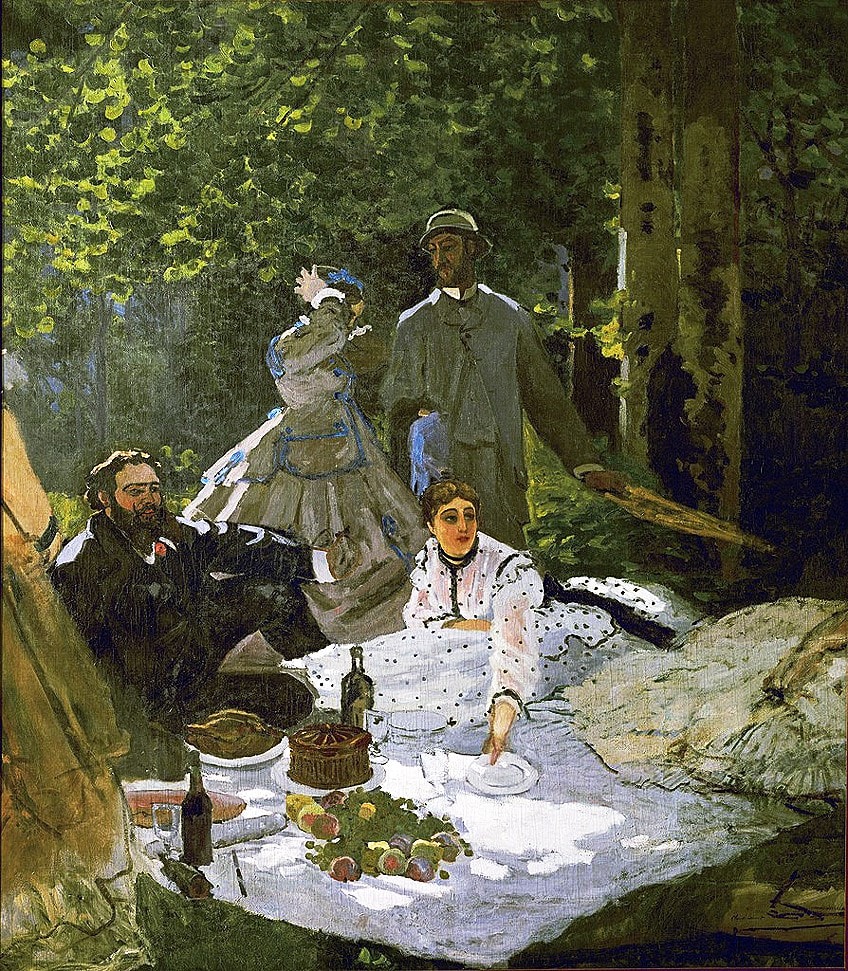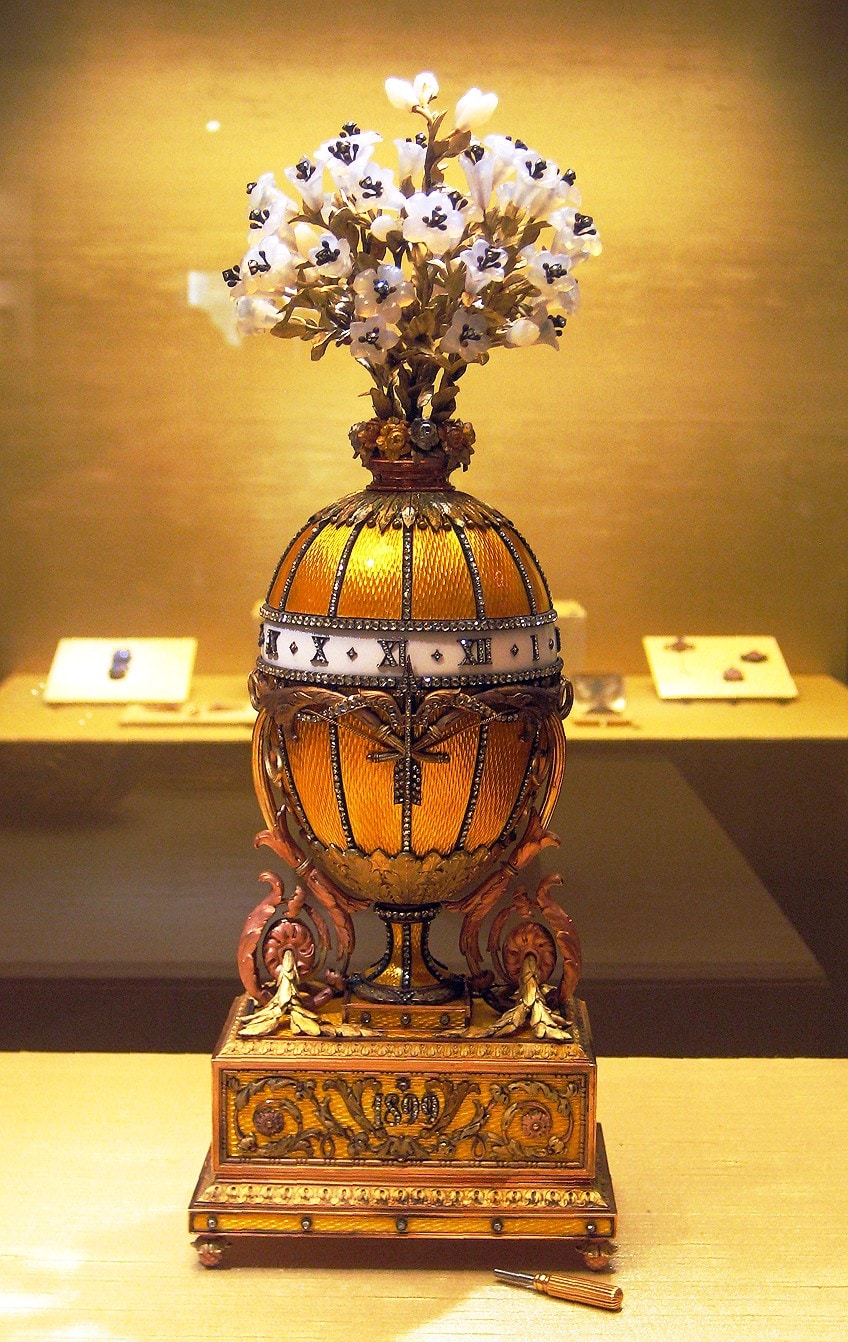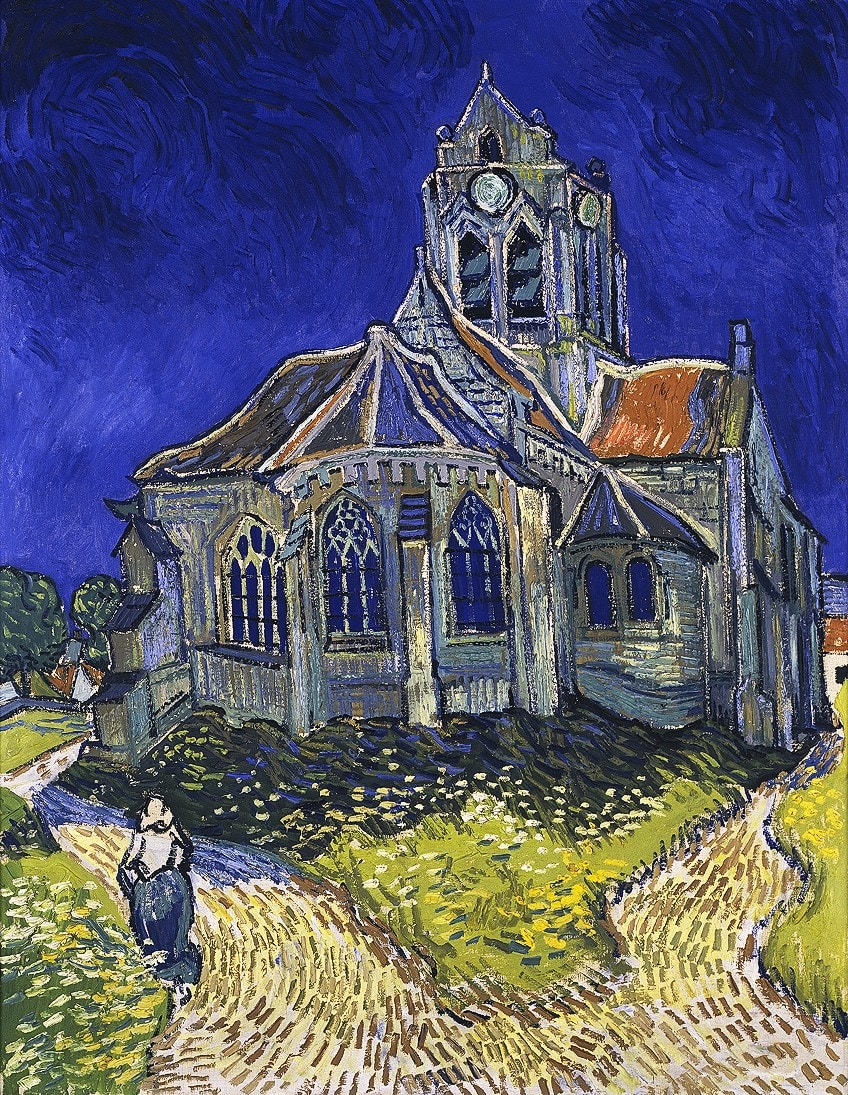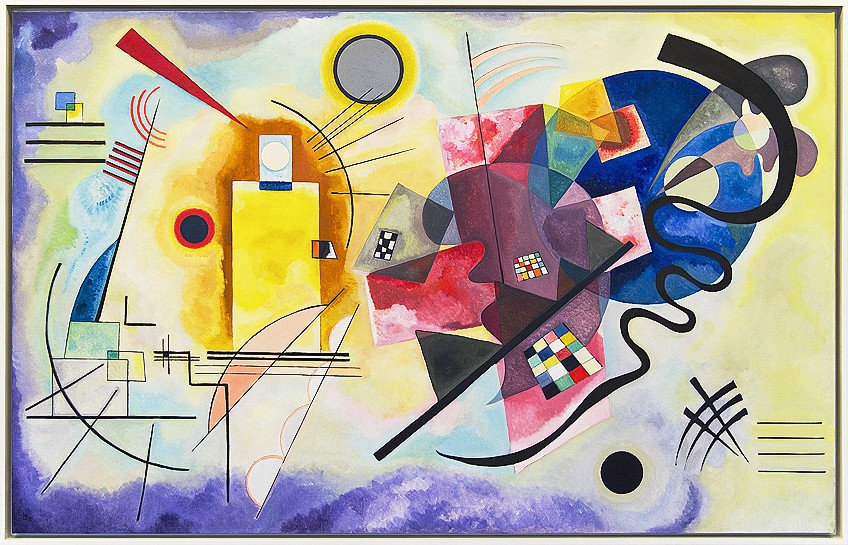How Can Art Be Classifies Into More Than One Thematic Category
What is visual art? Visual art is work that is intended to be viewed visually. There are several dissimilar types of visual art, and artistic works may be fabricated with a multifariousness of materials, methods, and techniques. In this commodity, we will look at the various visual fine art forms and visual art examples.
Table of Contents
- 1 What Are the Three Types of Visual Arts?
- 1.1 Fine art
- 1.two Decorative Art
- 1.3 Commercial Art
- 2 The Various Classifications of Fine art
- ii.one Representational Art
- two.two Abstruse Art
- ii.iii Non-Objective Art
- iii Oft Asked Questions
- 3.i What Are the Three Types of Visual Art?
- iii.2 What Is Visual Art?
What Are the Iii Types of Visual Arts?
While the larger definition of "the arts" includes everything from painting to theater, vocal, design, and much more than, the visual arts definition includes those artistic achievements that tin can exist seen, such as statues or paintings. These types of visual arts can exist divided into iii categories: decorative, commercial, and art. Each one of these visual fine art types has subcategories, and they might exist representational, abstruse, or non-objective.
Paintings, sculptures, wearing apparel or fashion designing, sketching, press, pottery, photographing, videography, movie theatre, graphical or commercial styling, handicrafts, and architecture are examples of broader visual art genres. Allow u.s. look at these various visual art types as we all as examples of visual arts.
Fine Art
Fine art can exist described as a type of fine art that is created more often than not for its visually pleasing qualities. This concept differentiates and raises fine art above decorative and commercial arts that besides have a functional purpose. High art permits an creative person'southward creativity to exist fully expressed and displayed without regard for commercial or applied factors such as utility.
Whereas the fine arts can include vii diverse categories of fine art, the fine visual arts have traditionally been limited to iii: sculpture, painting, and architecture.
Nevertheless, larger definitions of the fine visual arts would also include sketching. Even if they were precursors of painting or three-dimensional forms of art, the masters' sketches are recognized as fantabulous art on their ain merit. From the Renaissance era forward, the phrase "fine arts" was used to separate specific fine art forms from new types of commercial pattern or the labor of artisans. What makes this art "fine" is non a remark on the caliber of the piece in question. Rather, the definition is concerned with the technique and integrity of the bailiwick.
 Le Déjeuner sur fifty'herbe (1866) by Claude Monet, located in the Musée d'Orsay in Paris, France;Claude Monet, Public domain, via Wikimedia Eatables
Le Déjeuner sur fifty'herbe (1866) by Claude Monet, located in the Musée d'Orsay in Paris, France;Claude Monet, Public domain, via Wikimedia Eatables
Other types of visual art might be of high quality while not existence designated as "art." Although "fine art" is primarily a Western phrase, other civilizations have recognized comparable divisions between "higher" and "lower" arts. Sculptures, paintings, and building architecture are commonly referred to as the "major arts," with "minor arts" alluding to decorative or commercial art genres.
Architecture is the only type of corking visual fine art that has a feeling of usefulness or practical features. Still, not all ordinary structures volition be classified as fine architecture.
The builder's design must nonetheless incorporate a feeling of dazzler and inventiveness. Renowned fine artists often have a higher reputation and notoriety than their decorative and commercial equivalents, either during their lifetimes or after their deaths. Older artwork, such as that of ancient artifact, is usually considered fine fine art. Michelangelo and da Vinci, among the "Old Masters" who painted between the Renaissance and the 1800s, are noteworthy fine painters. While many older or classical works of art are considered first-class art, new and contemporary works are likewise.
 A good example of architecture is Saint Basil's Cathedral from the Cherry-red Square in Moscow. Its prominent onion-shaped domes, painted in bright colors, create a memorable skyline, making St. Basil'due south a symbol both of Moscow and Russia as a whole;PIERRE ANDRE LECLERCQ, CC Past-SA 3.0, via Wikimedia Commons
A good example of architecture is Saint Basil's Cathedral from the Cherry-red Square in Moscow. Its prominent onion-shaped domes, painted in bright colors, create a memorable skyline, making St. Basil'due south a symbol both of Moscow and Russia as a whole;PIERRE ANDRE LECLERCQ, CC Past-SA 3.0, via Wikimedia Commons
Within impressionism, expressionism, and other contemporary art styles, a new class of fine painters arose beginning in the 1800s. Well-known painters in these genres include Vincent Van Gogh, Pablo Picasso, Jackson Pollock, Umberto Boccioni, and Claude Monet.
Numerous modern fine artists have broadened the definition of fine art by cartoon motivation or elements from other forms of visual art.
Yet, the one-of-a-kind, limited character of their art, as well equally their unrestricted creative liberty, keep mod fine artists at the elevation of their game. Jeff Koons, David Kracov, Yayoi Kasuma, Barbara Kruger, and Damien Hirst are some of today's most well-known modern fine visual artists.
Decorative Fine art
Decorative arts are frequently disregarded equally art forms due to the fact that they are both aesthetically pleasing as well every bit functional. The terms "decorative arts" and "crafts" can exist used alternately; the design and fabrication are both bonny and commonsensical. Objects manufactured for the interiors of structures and interior design are examples of ornamental arts, still, architecture is not generally included.
The decorative arts can comprise commonplace appurtenances, but they are separate from mass-produced reproductions of these items.
 Bouquet of Lilies or Madonna Lily Egg past Fabergé;shakko, CC BY-SA three.0, via Wikimedia Eatables
Bouquet of Lilies or Madonna Lily Egg past Fabergé;shakko, CC BY-SA three.0, via Wikimedia Eatables
An object is typically regarded as a decorative art if it is handcrafted by a skilled craftsperson. Pottery, glassware, carpentry, fabrics, enamelwork, and metalworking are common decorative art techniques. Each of these media may be further subdivided; for example, the cloth medium comprises everything from dressmaking to wall tapestries, basket weaving, needlework, and interior materials.
The ornamental arts are prevalent in cultures all across the world. Textile designer William Morris, jewelry and pottery craftsman Peter Carl Fabergé, and others are among the well-nigh well-known decorative artists.
When compared to their colleagues in painting or sculpture, decorative artists are often obscure. Nonetheless, their work is equally significant in relaying the histories and stories of societies both past and present.
Commercial Art
Commercial art, like ornamental arts, may be both commonsensical and aesthetically pleasing. Information technology is an creative service developed for monetary gains, such as marketing. Commercial art is used to generate interest in and sales of companies, goods, and concepts. Commercial art is deputed by brands and corporations to express a specific message to an audience.
Graphic design, photographs, illustrations, animations, printing, broadcasting, dressmaking, visual effects, product engineering science, and move graphics are examples of commercial arts.
Commercial art may be seen in a variety of mediums, including publications, websites, applications, television, retail displays, and product packaging. Commercial art is frequently seen in new types of media, yet it has been used to annunciate items for millennia. This art form is used not only by companies and corporations, but besides past the government and the military equally a means of communication. Commercial painters created famous military recruiting posters, state propaganda, and even infrastructure projects.
Commercial art includes London's renowned Tube logo, early Coca-Cola advertising, and Andy Warhol's Campbell's soup advertisements. Commercial artists are either recruited or commissioned to make works of art for paying customers. Commercial artists, unlike fine painters, generally work to a brief simply might still take enough artistic flexibility or flair to create experimental or pioneering commercial fine art. Many of the avant-garde painters who rose to prominence during the Art Deco, Art Nouveau, and Popular Art eras were commercial artists.
Andy Warhol, Norman Rockwell, Alphonse Mucha, and Takashi Murakami, are among the most well-known commercial painters.
Some artists began their careers in commercial art before transitioning to fine fine art, and vice versa. These artists are often responsible for blurring the boundaries between high and low arts and questioning the concepts of exclusivity that are typically associated with the fine arts.
Before becoming the well-known artist he is today, Andy Warhol fabricated artwork for companies such as Campbell's Soup and Brillo. Contemporary artists such equally Takashi Murakami blur the lines fifty-fifty further by creating fine fine art that incorporates styles and motifs from "low" commercial arts such every bit anime. Murakami displays and develops fine art as well as mass-produced commercial fine art, frequently in cooperation with businesses such as Louis Vuitton and performers including Kanye West and Billie Eilish.
The Various Classifications of Art
Three categories are used to characterize artworks throughout all visual arts. Artwork will always autumn into 1 of these three categories. The categories are Representational art, Abstract art, and Non-Objective art.
Representational Art
Any artwork that displays plainly recognized or recognizable subjects is considered representational art. Representational art is the virtually universally renowned and widely loved art form. Due to the other two groups, non-objective and abstract, beingness comparatively younger forms, this category as well has the almost art attainable.
The majority of ancient and classical art is classified as representational art.
 The church building in Auvers-Sur-Oise, view from the Chevet (1890) by Vincent van Gogh; located in the Musée d'Orsay in Paris, French republic;Vincent van Gogh , Public domain, via Wikimedia Eatables
The church building in Auvers-Sur-Oise, view from the Chevet (1890) by Vincent van Gogh; located in the Musée d'Orsay in Paris, French republic;Vincent van Gogh , Public domain, via Wikimedia Eatables
Despite showing actual items, figurative fine art is not necessarily hyper-realistic; unlike photography, it does not accept to reverberate the subject correctly. Vincent Van Goh, Michelangelo, Leonardo da Vinci, Edward Hopper, and Frida Kahlo are examples of representational artists.
Abstract Art
Abstract art draws themes or inspiration from reality and displays them in ways that vary from how nosotros see the same subjects in our daily lives. This might include highlighting lines, forms, or colors that modify the topic. Cubism, Minimalism, and Precisionism are subcategories of abstract art. Brainchild may also occur when the artist chooses to perceive the subjects in an unconventional style.
Abstraction is a relatively new addition to the art world, with its origins in the Impressionists' diversions from realism.
At the cease of the nineteenth century, it began to acquire popularity in many forms all across the earth. Painters began to adopt a more than cerebral approach to their work. This new method of art tin can be seen in Magritte's artwork The Treachery of Images, which was completed in 1939. The words "This is not a pipe" are written in French beneath a figurative painting of a piping. The idea is that the artwork is simply a motion-picture show of a pipe, and not the actual pipe itself. This era's artists were viewing paintings equally pictures, allowing for a new kind of intellectual expression.
Many individuals struggle to comprehend the distinctions between abstraction and non-objective art. The obvious stardom is in the subject area matter.
The artwork is accounted abstruse if the creator begins with a topic from reality. Brainchild, nonetheless its ascension popularity, is only about 200 years quondam and remains a misunderstood fine art class. Marker Rothko, Henri Mattise, Georges Braque, and Jasper Johns are examples of abstruse painters.
Non-Objective Art
Non-objective art deviates from reality in no way. It is like to brainchild just differs in that it is not based on reality. Not-objective art, on the other paw, employs the components, materials, and concepts of fine art to produce visually appealing work.
Wassily Kandinsky, Jackson Pollock, Piet Mondrian, and Sonia Delaunay are examples of non-objective artists.
 Yellowish-Red-Blue (1925) by Wassily Kandinsky, located in the Musée National d'Art Moderne in Paris, French republic;Wassily Kandinsky, Public domain, via Wikimedia Commons
Yellowish-Red-Blue (1925) by Wassily Kandinsky, located in the Musée National d'Art Moderne in Paris, French republic;Wassily Kandinsky, Public domain, via Wikimedia Commons
That concludes our await at the various visual art forms and visual art examples of artists in those forms. Today, the term "visual arts" refers to both commercial arts and fine arts, as well every bit applied decorative arts and crafts. It has not e'er been this way though. Until the 20th century, the term "artist" was oft reserved and express to artists working in the fine arts. Handicraft, crafts, business, and industrial fine art media artists were frequently disregarded. Nowadays, in that location is much broader respect for artists' skill and aptitude in all types of visual arts.
Oft Asked Questions
What Are the Three Types of Visual Art?
The visual arts definition encompasses visible artistic works such as monuments and paintings. These visual arts are classified into 3 types: ornamental, commercial, and fine art. Each of these genres of visual fine art includes subcategories that might exist representational, abstract, or non-objective. Paintings, sculptures, costume or mode pattern, drawing, printing, ceramics, photography, videography, pic, graphical or commercial way, handicrafts, and architecture are some examples of larger visual art disciplines.
What Is Visual Art?
The larger definition of the arts includes everything from painting to theater, vocal, design, and much more, the visual arts definition includes those artistic achievements that can be seen, such every bit statues or paintings. The creative person'southward goal frequently informs us of the sort of piece of work nosotros are watching. Aside from that, the medium's application might have an bear on on the sort of artwork.
montanezdient1993.blogspot.com
Source: https://artincontext.org/types-of-visual-art/
0 Response to "How Can Art Be Classifies Into More Than One Thematic Category"
Post a Comment